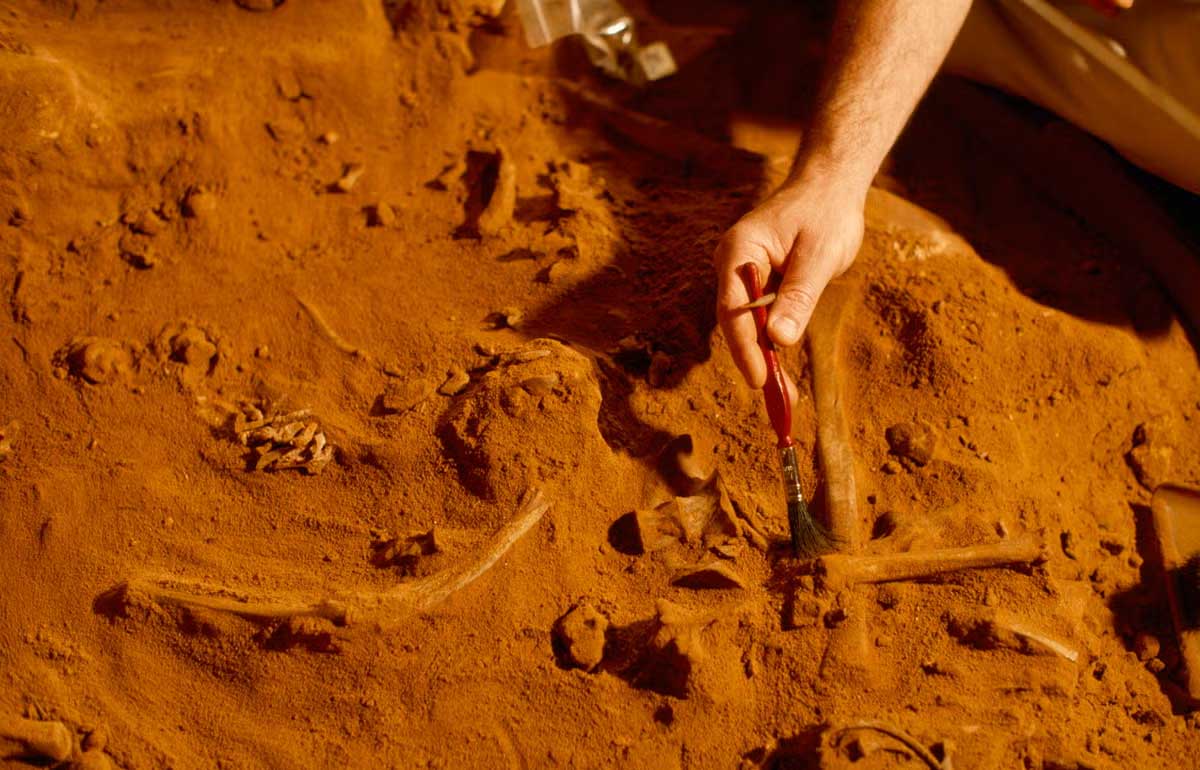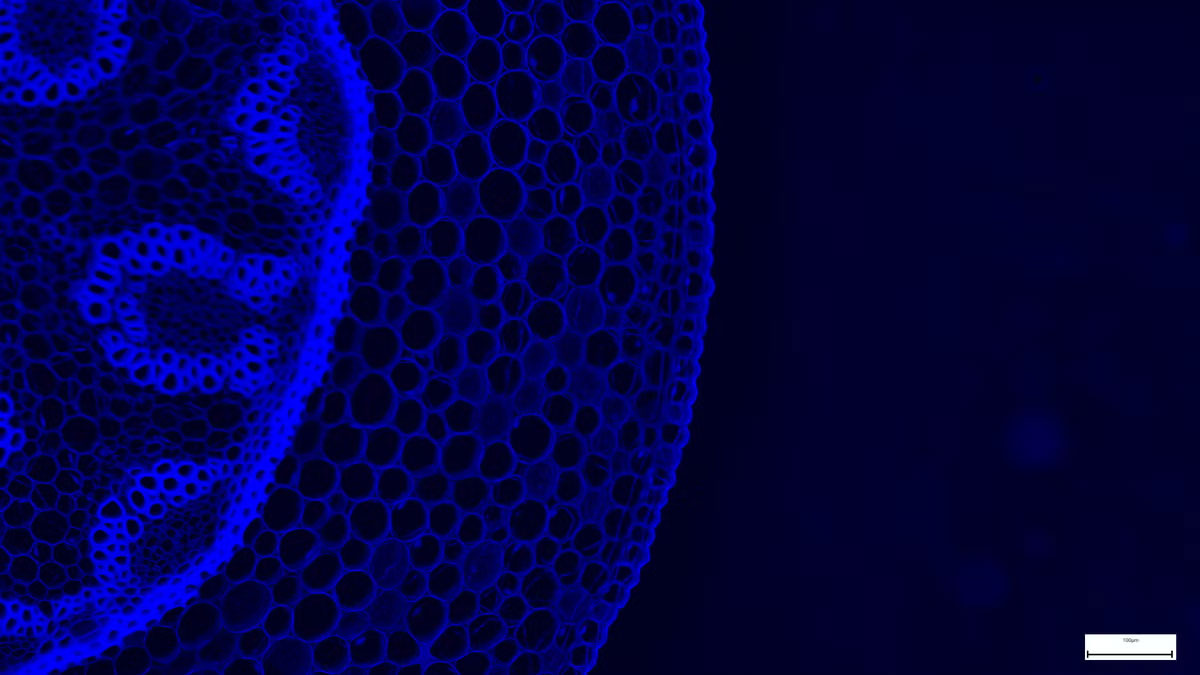And paleontologists and geneticists are finding more and more evidence to support this fact. Using fossils and genetic dating, scientists have put forward very different candidates for the role of the world’s first animal. Today, animals of all shapes and sizes roam the Earth, from nearly microscopic creatures like tardigrades to 80-foot (25-meter) blue whales. These organisms emerged and developed over millions of years of evolution. But which animal was the first on the planet?
The answer to that question is hotly debated by scientists. Dozens of different studies, looking at everything from the evolution of chromosomes over time to ancient fossils, have narrowed it down to two candidates: sponges and comb jellies.

Modern comb jelly. Despite their name, these organisms are not jellyfish, and research suggests they may be the first animals to exist. Reinhard Dirscherl
Some of the best information about early animals comes from fossils dating back to the Cambrian period, which began about 541 million years ago. During this time, Earth experienced a surge of new species in the Cambrian explosion: hundreds of thousands of animal species suddenly appeared in just 10 million years. Almost every type of animal body plan that exists today evolved during the Cambrian explosion, including early arthropods, mollusks, and even the chordates that later gave rise to vertebrates. Beautifully preserved specimens from a rock formation known as the Burgess Shale in British Columbia give us a window into what these early animals looked like.
But all these species didn’t just appear out of nowhere. In the 1950s, previously discovered fossils were identified as the remains of animals from the Ediacaran period, which lasted from about 635 million years ago to the beginning of the Cambrian period 541 million years ago.

A trilobite fossil from the Burgess Shale in British Columbia, Canada. Trilobites were one of many animals that evolved during the Cambrian explosion. Crux Explorer
Unlike the hard exoskeletons found in many Cambrian fossils, the animals that lived during the Ediacaran period were mostly soft-bodied, teardrop-shaped animals such as cnidarians, a group that includes animals such as jellyfish and sea anemones, worms, and possibly sponges. Soft tissue is extremely difficult to preserve because it breaks down more easily than bone or exoskeletons. This means that the fossil record of Ediacaran animals is not only scarce, but also much more difficult to analyze. Perhaps the most famous of these is a worm-like animal called Dickinsonia, which looks like a large dinner plate with ridged segments radiating from its center.
Before that, things get murky. “Beyond the Ediacaran period, no one’s really looking,” Elizabeth Turner, a paleobiologist at Laurentian University in Ontario, told Live Science. Part of the problem, she explained, is that scientists don’t really know what to look for. “We’re primates; we recognize patterns,” she said. She thinks the earliest animal fossils likely had little or no recognizable patterns.

Imprints left by Dickinsonia from the Ediacaran period. Alizada Studios
Turner presented what she proposes as the oldest known animal — a fossil specimen of what she says is an 890-million-year-old sponge — in a 2021 paper in the journal Nature. Not everyone agrees with her hypothesis, however.
All the evidence for early animals mentioned so far comes from fossils found in rocks that can be dated radiometrically using their isotopes, which degrade at a constant rate over time. But recently, a new method using a model called the molecular clock has gained prominence. Based on the assumption that genes mutate at a constant rate over time, scientists can analyze the genomes of modern animals and trace them back to when they first appeared. A 2023 study using chromosome data from modern ctenophores — also known as comb jellies — claims that they were the first known animals, appearing around 600 to 700 million years ago.

A close-up photo of the structure of a suspected sponge fossil, reported by Elizabeth Turner in her study in the journal Nature. Elizabeth Turner, Laurentian University
But Nick Butterfield, a paleobiologist at the University of Cambridge, doubts both theories. If animals had been around 890 million years ago, he says, we would have seen evidence of biomineralization, in which molecules from animals’ organic matter can cause surrounding minerals to crystallize. But the earliest known biomineralization dates back only 750 million years.
On the other hand, Butterfield isn’t sure whether the comb jellies study provides concrete proof that comb jellies were the earliest animals. “Molecular clocks don’t provide data; they provide hypotheses,” he said. Over the years, studies using different genes have produced conflicting results, supporting either comb jellies or sponges. So Butterfield is hesitant to give the crown to comb jellies based on the most recent study alone.
Even if the ancestors of comb jellies were the first animals, Butterfield doubts they looked like they do today. Modern comb jellies have complex structures, such as muscle and nervous systems, that simpler animals like sponges lack.
The 500-million-year-old Burgess Shale is home to a newly identified species. The giant bivalve arthropod Balhuticaris voltae — vaguely similar to modern crustaceans — has a unique outer shell, or carapace, that hangs over its front like the floppy ears of a basset hound.
The animals of the Burgess Shale have a huge place in the public imagination, helped by cult science writer Stephen Jay Gould’s 1989 book, Wonderful Life. The Burgess Shale is a huge fossil deposit that dates back more than 500 million years to the Cambrian period, when a huge number of animals were caught in a kind of landslide and preserved almost completely. This means that even their soft tissues, which are usually lost through decomposition when organisms are exposed to the weather, are intact.

The Cambrian Period, which the Burgess Shale refers to, ends with the Cambrian Explosion just before it – an incomprehensibly large explosion of species across the planet – and the mass extinctions that followed at intervals after that, including the one that infamously killed off the dinosaurs. Between these mass extinctions, almost every species on Earth was wiped out at various points, stunting our evolution to the present day.
The Burgess Shale is a special glimpse into an almost unrecognisable time of flora and fauna, with entire families of animals that can’t really be related to anything that exists today. New species are constantly being studied and taxonomised, and more than 200 have been discovered to date. A peer-reviewed paper describing the newest species, Balhuticaris voltae, is published in the journal Cell.
Balhuticaris is huge, the authors explain. “This species has an extremely elongated and multi-segmented body, bearing about 110 pairs of homonomous biramous appendages, the largest number of any Cambrian arthropod, and at 245 mm in length it represents one of the largest known Cambrian arthropods.”
Most of the bivalves we know are typically smaller than 10 centimeters. Size is an important ecological factor related to what and how an animal eats. The gigantism of Balhuticaris tells us that bivalves explored different ecological positions, and it may be interesting to understand how prey and predator interacted at that time.






